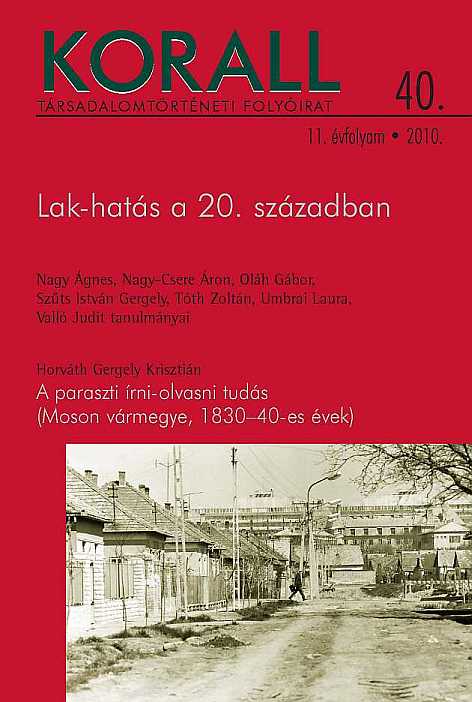A paraszti írni-olvasni tudás és Moson vármegye oktatási reformjai az 1830–40-es években
Peasant Literacy and the Educational Reforms of Moson County in the 1830s and 1840s
Author(s): Gergely Krisztián HorváthSubject(s): History
Published by: KORALL Társadalomtörténeti Egyesület
Summary/Abstract: This study examines the institutional conditions of literacy in the former Moson County. Moson, due to 70% of its population being German, was the only German- majority county in historical Hungary. As the first censuses in the second half of the nineteenth century demonstrate, the county also boasted the best rates of literacy in the entire country. The study explores the background and causes of this phenomenon. It suggests that the tradition of widespread literacy originated in Protestantism, which is testified by the popularity of handwritten hymnals, and that it was preserved among the mostly recatholicised German population. It is perceptible that county authorities paid increasing attention to education from the 1930s. They regularly monitored the condition of schools, supervised compulsory school attendance, and took sanctions in cases of truancy. These efforts were indubitably fruitful. The logistical regression analysis of the literacy figures of the Census of 1880 by cohorts shows that those born between 1830 and 1849 had 75% higher chance to learn to read and write than those born before 1829. The gender differences are also significant. While women born later had twice the chance to be literate than those born before 1829, this figure in men is 53%.
Journal: Korall - Társadalomtörténeti folyóirat
- Issue Year: 2010
- Issue No: 40
- Page Range: 134-145
- Page Count: 12
- Language: Hungarian

